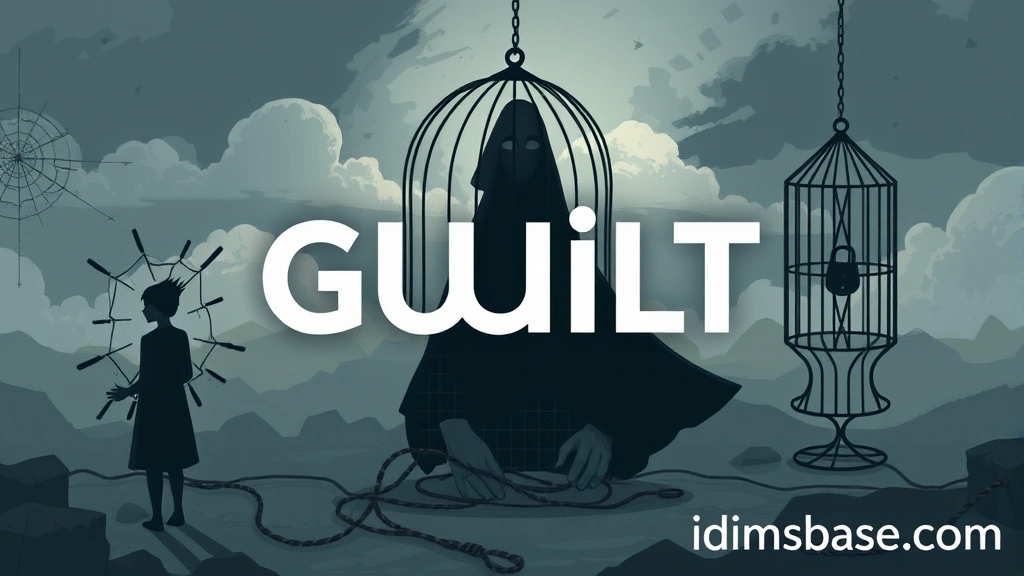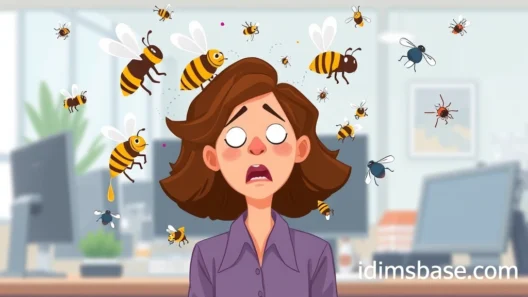Ever felt that heavy, sinking feeling in your stomach? That persistent whisper in your mind that just won't quiet down? You know, the one that tells you something isn't quite right, that you've messed up? That, my friend, is guilt. It's a powerful and often uncomfortable emotion, but it’s also a universal human experience.
Guilt can be a tricky thing to describe. It's not always obvious, and it can manifest in so many different ways. That's why metaphors are such fantastic tools! They help us paint a clearer picture of this complex feeling, making it easier to understand and even talk about. So, let’s dive into 38 vivid metaphors that capture the essence of guilt. Get ready to see this emotion from a whole new perspective!
Metaphors for Guilt: A Deep Dive
You might be surprised by how many ways we can describe guilt. From a nagging bug to a heavy chain, each metaphor offers a unique insight into its nature.
Guilt as a Burden or Weight
Guilt often feels like something you carry, doesn't it? Something that slows you down.
- A heavy cloak: It wraps around you, making every movement difficult.
- A lead weight in your stomach: That uncomfortable, sinking sensation.
- A stone in your shoe: A constant, irritating presence that you can’t shake off.
- A monkey on your back: A persistent, unwelcome companion that drains your energy.
- A heavy chain: It binds you, restricting your freedom.
- A millstone around your neck: A crushing weight that pulls you down.
Guilt as a Persistent Presence
Sometimes, guilt just won't leave you alone. It's like a shadow, always there.
- A shadow that follows you: No matter where you go, it's right behind you.
- A persistent whisper: A voice in your head that won't be silenced.
- A nagging itch: You want to scratch it, but it just keeps coming back.
- A haunting melody: A tune that plays on repeat in your mind, unwelcome and unsettling.
- A slow leak: It slowly drains your peace of mind.
- A constant hum: A low-level background noise that you can't escape.
Guilt as a Corrosive Force
Guilt can eat away at you, causing damage over time if not addressed.
- A gnawing worm: It slowly consumes your inner peace.
- Rust on your soul: It tarnishes your spirit, making you feel less vibrant.
- A slow poison: It subtly affects your well-being, little by little.
- A spreading stain: It expands, touching more and more aspects of your life.
- A festering wound: If left untreated, it only gets worse.
- An acid bath: It burns and corrodes from the inside out.
Guilt as a Restrictive Force
Feeling guilty can make you feel trapped or unable to move forward.

- A cage: It locks you in, preventing you from truly living.
- A tangled net: You feel caught, unable to break free.
- A tight knot: It constricts you, making breathing difficult.
- A locked door: It prevents you from moving past a certain point.
- A shackle: It binds your limbs, limiting your actions.
- A moral compass gone awry: It points you in the wrong direction, leading to confusion.
Guilt as a Mirror or Reflection
Guilt often forces you to look at yourself and your actions.
- A harsh spotlight: It illuminates your flaws and mistakes.
- A magnifying glass: It makes your errors seem much larger.
- A cold mirror: It reflects an image you don't want to see.
- A stark reminder: It brings unpleasant truths to the forefront.
Guilt as a Storm or Natural Phenomenon
Sometimes, guilt feels overwhelming, like a force of nature.
- A brewing storm: You can feel it gathering, about to break.
- A dark cloud: It hangs over you, blocking out the light.
- A raging fire: It consumes you with its intensity.
- A tidal wave: It crashes over you, pulling you under.
Guilt as an Internal Conflict

Guilt can feel like a battle happening within you.
- A moral tug-of-war: Different parts of you are fighting for control.
- A courtroom in your mind: You are both the accused and the judge.
- A broken record: The same negative thoughts play over and over.
Guilt as a Mark or Scar
Guilt can leave a lasting impression, a reminder of what happened.
- A brand: A permanent mark that you carry.
- A scar on your conscience: A visible sign of past pain.
- A stain on your record: Something that affects your future perception.
Key Takeaways
Understanding guilt through metaphors can be incredibly insightful. Here are some key takeaways to remember:
- Guilt is multi-faceted: It's not just one feeling; it's a complex emotion with many layers.
- Metaphors provide clarity: They help us visualize and articulate an abstract concept.
- It can be a burden: Guilt often feels heavy and restrictive.
- It can be persistent: Guilt has a way of sticking around, like an unwelcome guest.
- It can be corrosive: If left unaddressed, guilt can damage your well-being.
- It offers a chance for reflection: Guilt can force you to confront your actions and learn from them.

Frequently Asked Questions About Guilt
You've got questions about guilt, and we've got answers! Let’s explore some common queries.
What is the purpose of guilt?
Guilt, though unpleasant, actually serves a vital purpose. It's an emotional signal that you've violated your own moral code or caused harm to someone else. It motivates you to make amends, learn from your mistakes, and behave better in the future. Think of it as your inner compass guiding you back to true north.
Is guilt always a bad thing?
Not at all! While intense or chronic guilt can be detrimental, healthy guilt is a sign of a functioning conscience. It helps us maintain social bonds, encourages empathy, and promotes responsible behavior. It's when guilt becomes disproportionate or irrational that it becomes problematic.
How can I deal with feelings of guilt?
Dealing with guilt effectively involves several steps. First, acknowledge the feeling and understand its source. If you've genuinely made a mistake, take responsibility and consider apologizing or making amends. Learn from the experience so you don't repeat it. If the guilt is irrational or excessive, challenge those thoughts and practice self-compassion. Sometimes, talking to a trusted friend, family member, or therapist can be incredibly helpful.
What's the difference between guilt and shame?
This is a great question! While often confused, guilt and shame are distinct. Guilt is about your actions – "I did something bad." It focuses on behavior and often motivates repair. Shame, on the other hand, is about your self – "I am bad." It's a more global, painful emotion that can lead to hiding and withdrawal, rather than making things right. Guilt says, "I made a mistake"; shame says, "I am a mistake."
Can guilt be a positive motivator?
Absolutely! When experienced in a healthy way, guilt can be a powerful motivator for positive change. It can spur you to apologize, to make things right, to work harder, or to be more considerate. It prompts self-reflection and growth, ultimately helping you become a better person.
When does guilt become unhealthy?
Guilt becomes unhealthy when it's disproportionate to the actual offense, when it's chronic and pervasive, or when it stems from situations beyond your control. It can also be unhealthy if it leads to self-punishment, anxiety, depression, or avoidance of social interactions. If you find yourself constantly burdened by guilt, it might be time to seek professional support.
We hope these metaphors and insights have given you a fresh perspective on the complex emotion of guilt. It's a part of the human experience, and understanding it better can help you navigate your own feelings and grow. What metaphor resonates most with you? Share your thoughts!





